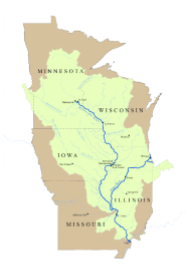We, as consumers, should be looking more into the food systems from which we buy our food from. This is because, we may not realize that what we thought was not a name brand item, is actually a name brand item (Halpin, 2024, slide 4). For instance, I personally tend to forget which sodas belong to Pepsi or Coca-Cola until I am on an airplane and they only serve either of the big brands. Another example brought up by Howard (2016) is, “Walmart, which controls 33 percent of US grocery retailing…” (p. 10). Howard continues, describing that this is a market issue because these top firms are creating shared monopolies, and the average consumer does not even realize this. They think they have a variety of brands to choose from, but little do they realize that it is all owned by one company. (Howard, 2016)
These companies then hire farmers to produce the meat and produce that we find in our grocery stores. Products that are not certified organic, use conventional farming which is “‘Capital-intensive, large-scale, highly mechanized agriculture with monocultures of crops and extensive use of artificial fertilizers, herbicides and pesticides, with intensive animal husbandry’” versus, alternative agriculture: “…organic agriculture, sustainable agriculture, regenerative agriculture, eco-agriculture, permaculture, bio-dynamics, agroecology, natural farming, low-input agriculture…” (Beus and Dunlap, 1990, p. 594).
I understand why conventional farming exists, and I can see why the big institutions use it, but it has negative effects on the environment and welfare of the crops and animals. In a video composed by PBS about Iowa farmers, it describes how using conventional farming affects other food systems, like fisheries. This happens through runoff and the pesticides from growing the crops and it ends up in the Iowa River, which connects to the Mississippi River. Even though these Iowa farmers are 1,000 miles away from the fisheries in the Gulf of Mexico, the use of conventional farming still affects other food we consume. In the map to the left, it shows how the Iowa River connects to the Mississippi River.
Dickinson Farm is an example of alternative agriculture, because they are certified organic with their produce, use a polyculture, and crop rotation. In the image below, the cows in the field are incorporated in the crop rotation through temporary pastures, to help give nutrients to the soil. This in turn, helps the crops flourish, because the soil is not depleted of the nutrients to help them grow, and there were no pesticides involved. Looking at the package in the store, or the brand of produce you buy, can help you become a more informed and sustainable shopper.

A map of the Upper Mississippi River Basin from the UMBRA
Dickinson Farm cattle and produce plot
Sources:
Beus, C. and Dunlap, R. (1990) Conventional versus Alternative Agriculture: The Paradigmatic Roots of the Debate.
Clark, L. F. (2016). Concentration and power in the food system: Who controls what we eat? Philip H. Howard, Bloomsbury Publishing, 2016, 216 p. Cuizine, 7(2), 10. https://doi.org/10.7202/1038484ar
GBH. (2021, September 7). Agricultural runoff and the Gulf of Mexico dead zone: Big river: A king corn companion. PBS Learning Media. https://witf.pbslearningmedia.org/resource/envh10.sci.life.eco.deadzone/agricultural-runoff-and-the-gulf-of-mexico-dead-zone/
Halpin, J. (2024, 9/5) What is a Food System? The aggregate of food-related activities and the environment within which these activities occur. [PowerPoint Slides]
Howard, P. (2016). Concentration and Power in the Food System. Who Controls What We Eat. EBSCO Publishing.
UMRBA. (2021) Upper Mississippi River Basin. [Image] umrba.org https://umrba.org/about
